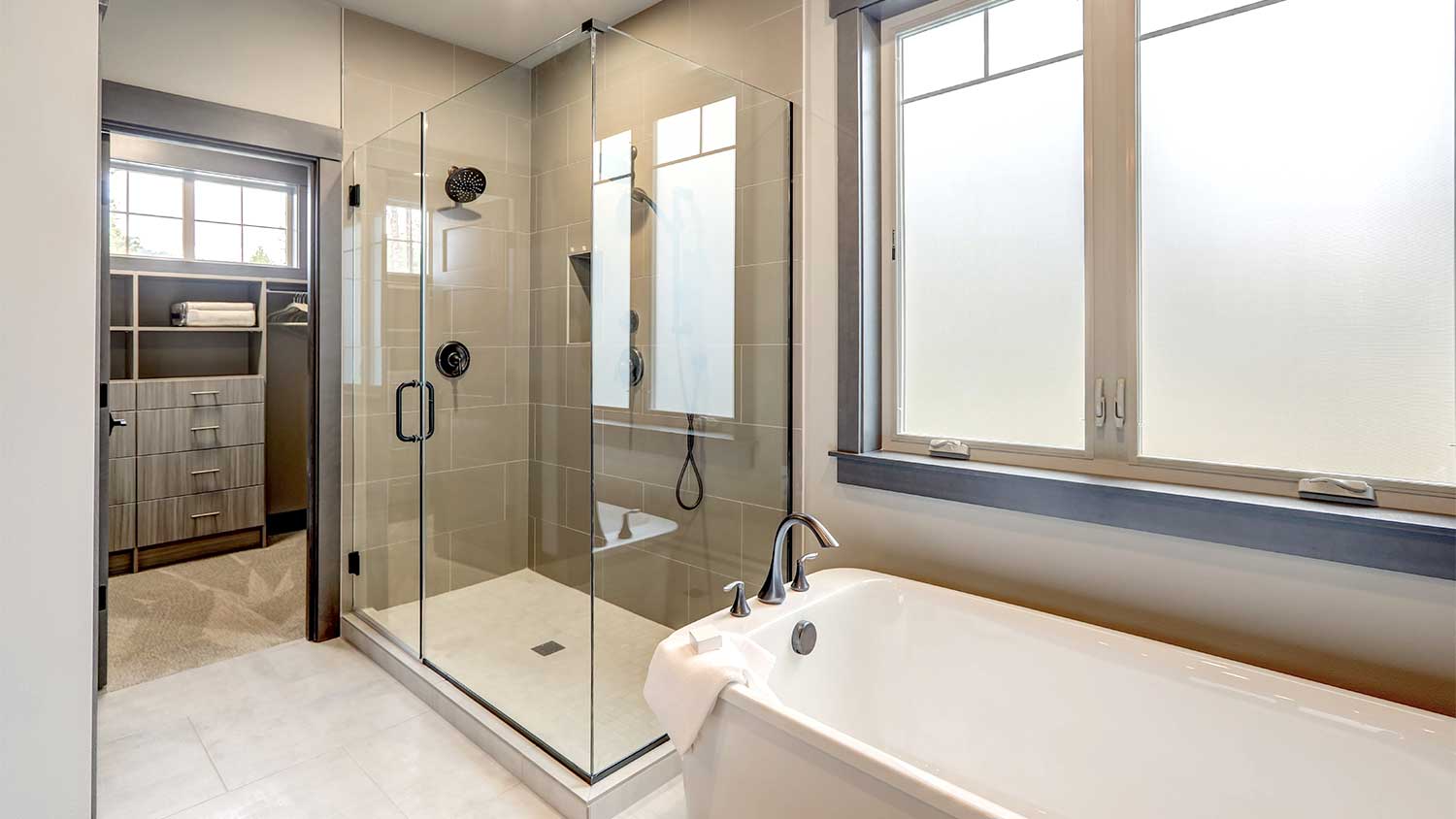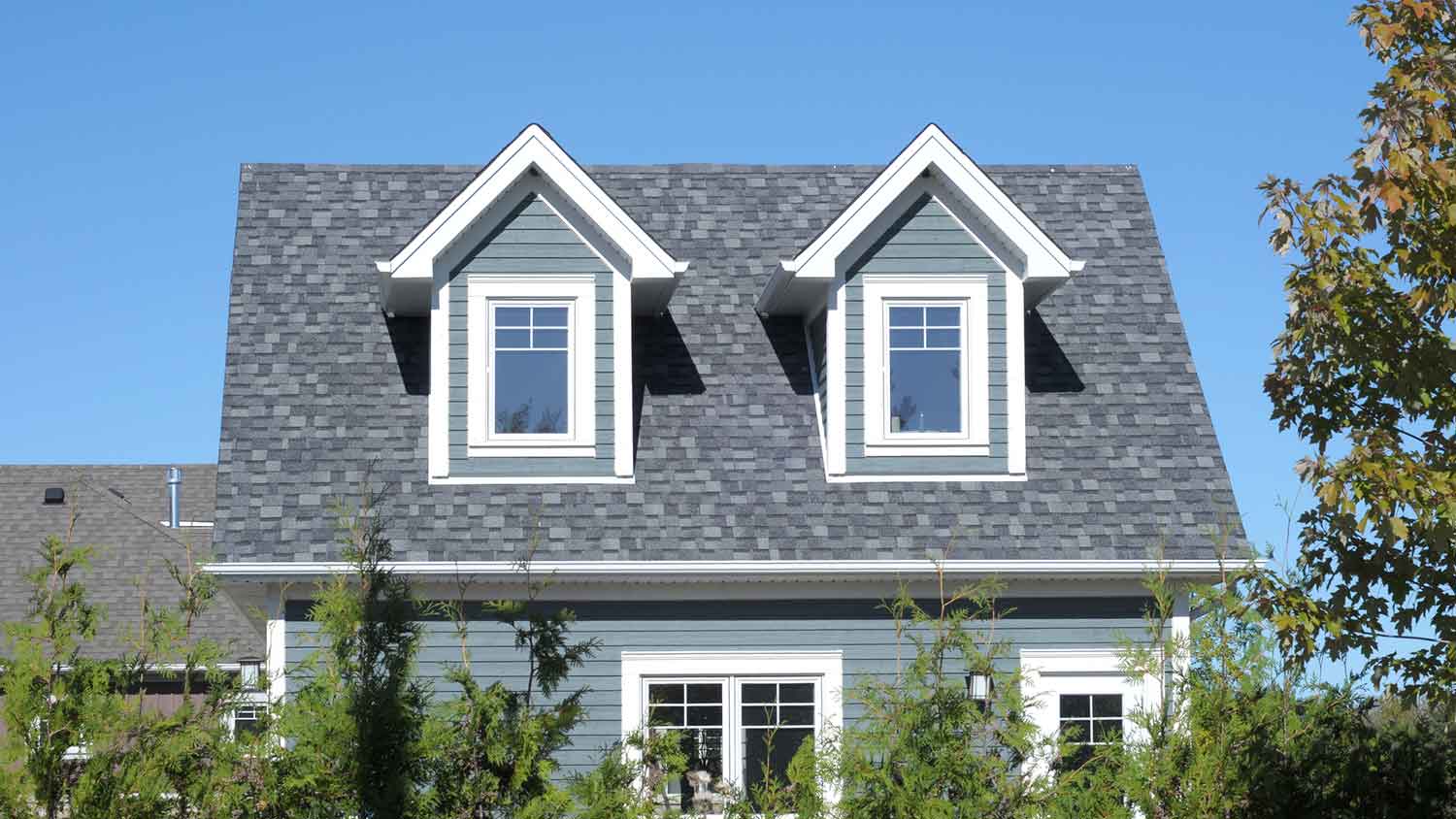
Thinking of getting rid of that old bathtub and replacing it with a walk-in shower? This walk-in shower cost guide will help you plan your budget.
Take your home to new heights.


Loft conversions expand attics into liveable spaces by literally raising the roof.
They include the basic features you need to live comfortably, like electricity and ventilation.
Roof renovations, like adding dormers and or hip-to-gable conversions, provide extra height.
It can feel like a waste when your attic isn’t spacious enough for anything beyond extra storage. The good news is that thanks to a little something called a loft conversion, that doesn't have to be the case.
At this point, you might be asking yourself: what is a loft conversion? This project transforms an attic into a room big enough to live in comfortably, and, unlike other types of home additions, it does so by expanding the roof rather than adding more square footage to a property.
A loft conversion is a home addition that expands an attic into a liveable space through roof alterations, like adding more height so that you don’t need to crouch while inside. Those with pre-existing attics or crawl spaces may prefer to increase the size of their abode this way, especially if their property is already cramped and doesn’t have room for a completely new build on the ground floor.
Loft conversions can be large or small, depending on what you want, and require adding windows, access to a staircase, new wall construction, insulation, soundproofing, electrical wiring, venting, and updated attic flooring. Some can also be fitted with plumbing for a small bathroom, but this extra will add more time and money to a project.
Though both a loft and an attic conversion take place inside an attic, the two types of spaces have some differences. The primary goal of a loft conversion is to make the space more livable. It involves raising the roof to meet mandatory height requirements and building an entrance large enough to accommodate a staircase.
On the other hand, the aim of attic conversions is to provide better, well-protected, and more organized storage space for an existing attic structure. It involves adding better attic insulation and remodeling the space instead of altering the roof. As a result, the height requirements are lower, ladder access is permitted, and the project is both less time-consuming and nowhere near as costly as a loft conversion.

The particulars of your attic and exactly how you modify your roof will determine the type of loft conversion you have.
Dormers are vertical extensions to sloped roofs that often feature windows and add both height and light to an attic. They come in many shapes and sizes and can be anywhere from the rear to the front of a roof. Here’s a look at the different types of dormers:
Rear: These types of dormers expand the back of a roof on either a house or an apartment.
Side: These look and perform the same as rear dormers, but are located on the side of a roof instead.
L-Shaped: Ideal for roofs with 90-degree angles or connecting slopes.
Gable: Also called pitched dormers, gable dormers feature two planes that slope upward into a triangular shape.
Hipped: Hipped dormers have three planes that form a pitch rather than two like gable dormers, which allows them to more seamlessly blend with the roof’s original appearance.
Shed: Shed dormers have flat rather than pitched slopes.
Wall: These dormers appear to connect to the wall below the eaves rather than to the roof itself.
Mansard roofs are flat on top, allowing water to run off into the gutters below. They are also sloped at a 72-degree angle in the front to give them a distinctive look.
This type of loft conversion involves remodeling a roof with a flat slope (or hip) into a pointed gable. It’s not possible to make this switch if your roof doesn’t already have a hip.
Velux lofts involve adding one or more skylights to an existing roof. While this type of conversion won’t add much height, it’s a great way to bring more light into an attic that already has plenty of headroom—and it will be the least time-consuming and expensive of the bunch.
This is by far the most demanding loft conversion option because it involves completely removing and replacing your old roof and raising the walls to make your attic space taller.
The cost of loft conversions ranges from as little as $7,000 to as much as $67,000 depending on which type you choose and exactly what you want to include. Raising a roof can add anywhere from $15,000 to $125,000 to your final bill, with low-lift options like adding a small dormer costing the least, and full-scale remodels like piggyback roofs the most.
Adding stairs, electricity, or ventilation can also add thousands. When in doubt, hire a home remodeler near you to determine exactly what you should expect to pay for a project like this.
From average costs to expert advice, get all the answers you need to get your job done.

Thinking of getting rid of that old bathtub and replacing it with a walk-in shower? This walk-in shower cost guide will help you plan your budget.

The cost to add a bedroom and bathroom can pay off with an increase in your home’s value and more space for you and your family. Costs vary by project scope.

From budget-friendly builds to advanced plans fit for a gourmet chef, the price to build a kitchen can vary. Learn the average kitchen installation cost.

What is a range in a kitchen, and which is best for your cooking needs? Learn about the various types of kitchen ranges and what to consider before buying one.

Small bathroom remodel costs depend on a number of factors—like what exactly you’re upgrading and the size of the room. This guide will help you budget.

Renovating your kitchen and want to know what the best tile for kitchen floor is? Our guide to the many types of kitchen floor tiles will help you make the best choice.